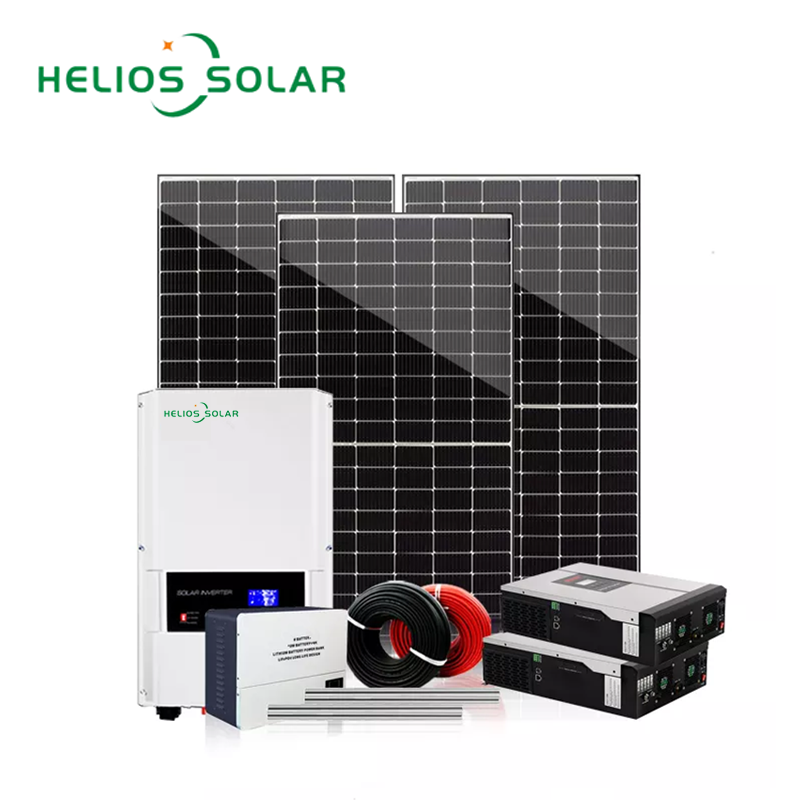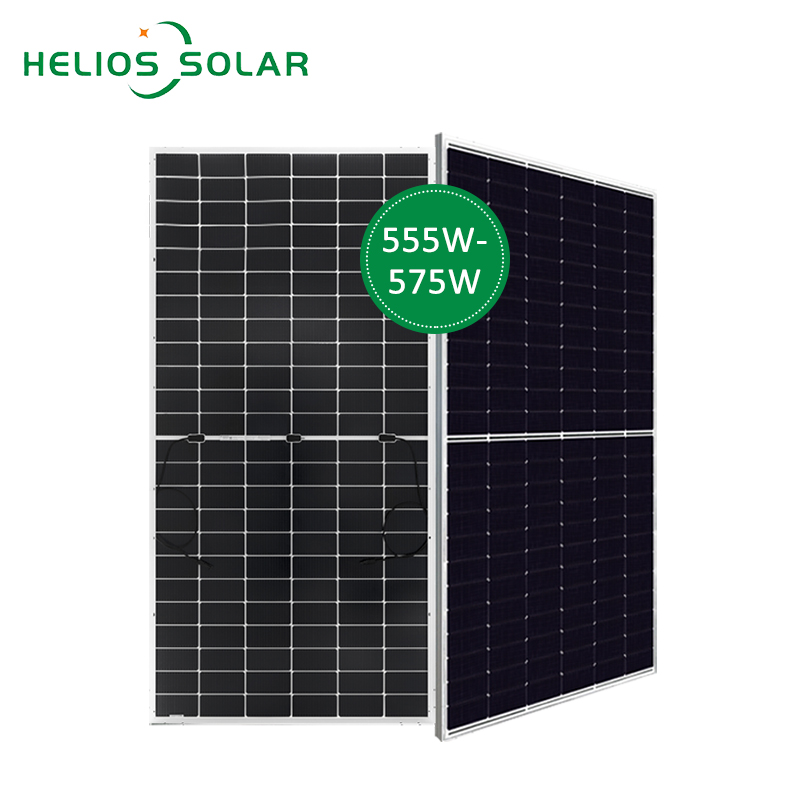HUNTERS POINT, Fla. — In this Florida development, no one pays an electricity bill.
It’s not because of subsidies, but by design: All of the 86 homes built or planned in Hunters Point, a residential development about an hour south of Tampa, boast 14 solar panels and a 12-kilowatt-hour home battery in the utility closet. 440w Solar Panel Manufacturer

On a typical afternoon, the solar panels on William and Sueann Fulford’s three-story house produce twice as much power as it consumes. They use some of the extra electricity to charge their battery, which powers their home through the night, and sell the rest to the power grid. The couple had been paying electric bills as high as $600 a month at times in their previous home in Virginia Beach.
“We haven’t had a power bill yet,” said William, 76, a retired contractor who spent decades building custom homes before moving to Florida. “If I ever do build another house, it’s going to have solar. It makes quite a difference.”
Hunters Point is the first residential development in the world to get a LEED Zero Energy certification, according to the U.S. Green Building Council, which means the entire community produces more electricity than it consumes. This style of construction offers a model of sustainable building in an era of climate change, according to Avery McEvoy, who researches carbon-free electricity at the Rocky Mountain Institute, a clean-energy think tank.
“When you’re building a home or building a community, you’re investing in your own generation, but also future generations,” she said. “The more that we plan in an integrated, sustainable way for the future, the more resilient our communities will be.”
In addition to reducing planet-warming carbon emissions, the solar panels and batteries in the homes at Hunters Point make them less likely to lose power in a storm. When Hurricane Ian slammed into southwestern Florida in 2022 and left millions without power — including homeowners across the street from Hunters Point — the Fulfords’ lights stayed on.
“I feel really safe here,” said William. “We went through one hurricane here already … and this neighborhood didn’t lose power, so it didn’t affect us.”
Resilience matters to this coastal neighborhood because Hunters Point sits on a low, canal-lined peninsula jutting out into Sarasota Bay. It’s protected from the storm-surge-prone Gulf of Mexico by a narrow barrier island less than 1,000 feet wide at its nearest point.
Pearl Homes, the Florida-based developer behind the project, elevated the streets of Hunters Point 3.5 feet above the existing ground level and created a low-lying central park that allows water to drain off the road after floods. Each of the homes is built atop a first-floor garage, so that all the rooms are at least 17 feet above sea level. The walls are designed to withstand 150-mile-per-hour winds.
But Pearl Homes founder Marshall Gobuty says a solar panel and a battery are just as important as raised roads and strong walls to make sure people can return to their houses after a major hurricane.
“If you can get to the house, fantastic. If your house is still standing, even better,” he said. “But if you have no power, you can’t stay in your house.”
In addition to keeping their own lights on during hurricanes, communities like Hunters Point can make the electric grid more resilient for their neighbors.
That’s because utilities can pay homeowners to use some of their home battery capacity to balance out the grid. At times where there’s plenty of power on the grid and electricity demand is low, the utility charges participating homeowners’ batteries. Then, when electricity demand peaks, the utility can draw energy from the batteries back onto the grid to meet demand.
The concept is called a “virtual power plant,” and there are more than 500 such projects in the United States and Canada, according to a February report from the energy and resource consulting firm Wood Mackenzie. Virtual power plants can help utilities meet peak demand without firing up fossil-fuel-fired “peaker plants,” which can ramp up power production at short notice.
“With a virtual power plant, you’re supporting your community and your local grid,” said McEvoy. “It’s just a different type of resilience. You can provide these services to your local system and get paid for it and keep [the grid] online.”
“By the time we finish our last home [in 2025], the goal is to be a virtual power plant,” Gobuty said.
A spokesperson for Florida Power and Light declined to say whether the utility is in talks with Hunters Point about the idea, but said it would face obstacles from the Florida Public Service Commission, which regulates big public utilities in the state.
Asked about the matter, Cindy Muir, who heads the commission’s Office of Consumer Assistance and Outreach, said in an email, “We’re not familiar with the term ‘virtual power plant;’ and thus, we have no rules defining that term.”
Before Pearl Homes began construction on Hunters Point in June 2022, it built one of the world’s first LEED Zero Energy homes — inside a warehouse 11 miles away in Palmetto, Fla.
The two-story house — the model for the houses now on sale in Hunters Point for $1.35 million to $1.8 million — was outfitted with an-air conditioning system, appliances, two TVs, a home battery and a set of solar panels (installed on the roof of the warehouse, where they could catch the sun). For 18 months, Pearl Homes ran the appliances as much as a typical homeowner might and gathered data on how much electricity the house consumed and how much its solar panels produced.
“Someone was in there whose full-time job it was to run the equipment,” said Gobuty. “We ran the shower. We ran the stove everyday. We even had a Peloton bike in there.”
In the 18 months since the developers showed that the model house produced more energy than it used, they discovered that the 22 homeowners who have moved in so far actually use about 25 percent less energy than expected — and their solar panels produce 35 percent more power than anticipated.
To make the houses run so well, Pearl Homes outfitted them with efficient appliances, six inches of foam insulation throughout the walls and double-paned windows. The developer spent $88,000 on solar panels and efficiency upgrades for each house. Homeowners can claim 35 percent in federal tax credits — roughly $30,000 — when they file their taxes the first year after moving in.

Solar Panel For Ac Unit Gobuty said he hopes a national home builder copies his company’s design, which could transform how Americans live across the country. “There’s somebody out there who’s going to do this,” he said.